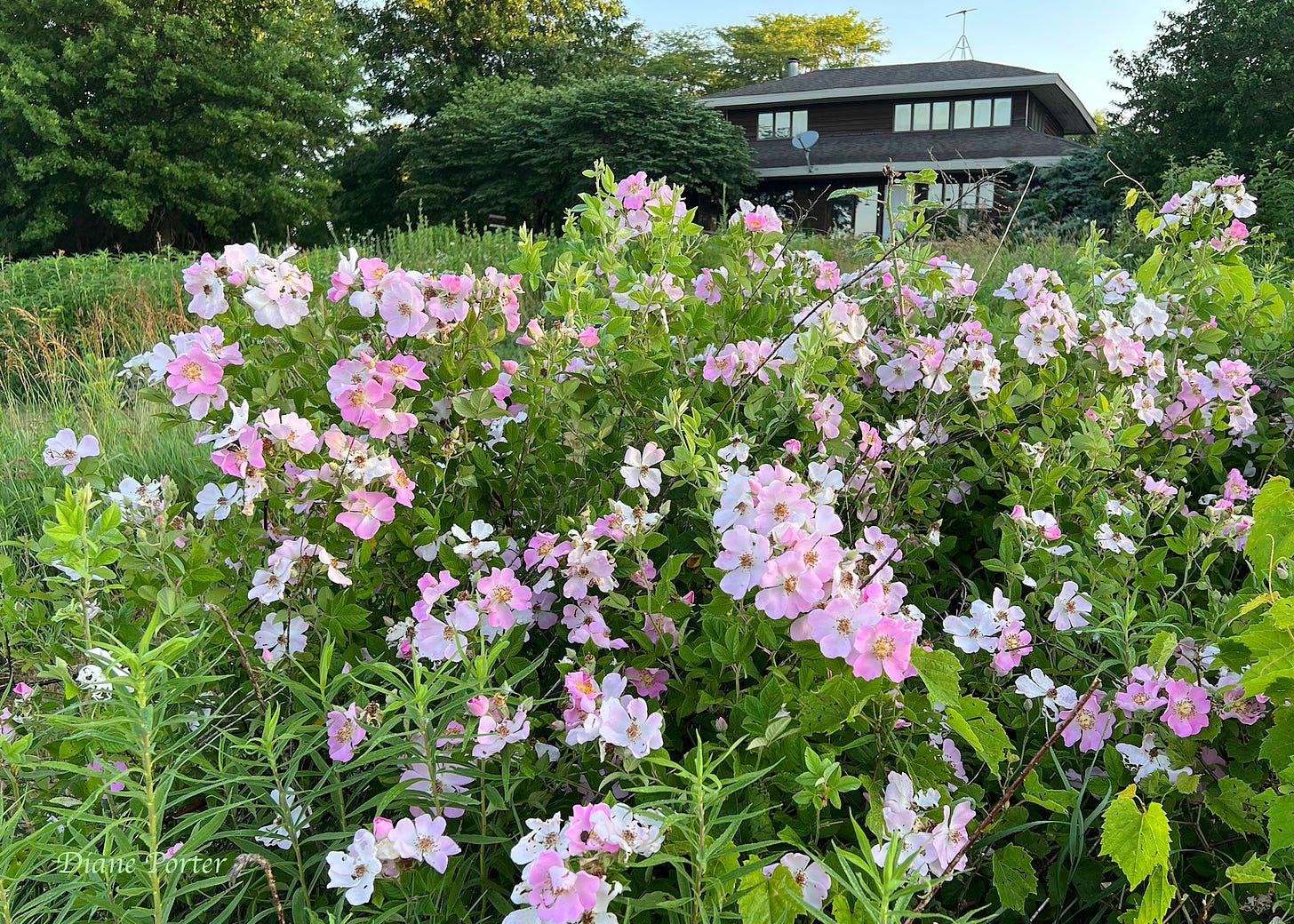

Discover more from My Gaia
In the grassy field near my house, there’s a mound of wild roses. It was planted there years ago by the hand of nature. I barely notice it in spring, when it blends into the green field.
And then the first buds open.
Suddenly there’s a burst of pink in the meadow. And walking toward it, I hear it buzzing. Bees are mobbing it. Moving fast, zinging from blossom to blossom. The bees are seeking pollen, which is the only reward the roses offer them. They do not produce nectar.
Buzz pollination
Bumblebees can buzz their wings in a special way to vibrate the pollen loose from a flower. The tempo is faster than the rate in flight. It’s easy to hear the difference in pitch. In flight, bumblebees make a loud buzzing. While gathering pollen in the heart of the flower, they make a fainter, higher-pitched buzz.
It’s called buzz pollination.
(You may want to turn your volume up to hear the quieter buzz pollination.)
Certain flowers specialize in getting pollinated by buzz pollination. Such flowers hold on to their pollen inside the anthers, with small openings to the outside. It takes a certain frequency to shake a quantity of pollen loose — the frequency produced in buzz pollination.
Bumblebees and certain other native bees have this ability. Honeybees, which are not native to North America, cannot do it.
In a slow-motion view, we see a bumblebee tidying up the pollen she has collected onto her legs. She will carry it to her nest as food for her larvae.
And she’s pollinated another generation of wild roses.
Videos by Diane Porter











What a fantastic phenomena you've captured for us! I never knew about buzz pollination and can't wait to tell friends about it. Thanks for your wonderful newsletter which never fails to delight.
Wonderful! Thank you for the best news buzz of the day.